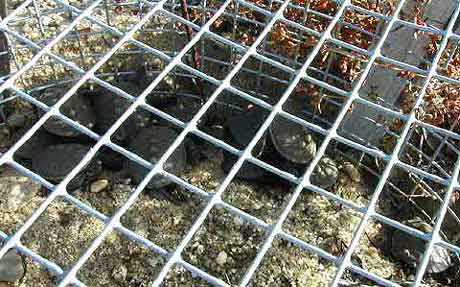 |
375, 5, 2.58, 2.33, 2.33 376, 5, 2.65, 2.36, 2.37 377, 6, 2.63, 2.34, 2.39 378, 5, 2.71, 2.29, 2.44 379, 5, 2.64, 2.37, 2.38 380, 5, 2.54, 2.26, 2.31 381, 5, 2.67, 2.31, 2.41 382, 5, 2.61, 2.30, 2.32 383, 5, 2.56, 2.35, 2.26 384, 5, 2.62, 2.29, 2.36 385, 5, 2.62, 2.35, 2.34 386, 5, 2.62, 2.23, 2.35 387, 5, 2.50, 2.25, 2.26 388, 5, 2.59, 2.24, 2.25 |
|
Only one, #383, had a noticeable anomaly. Her rear-most marginal scutes on either side were split in half.
|